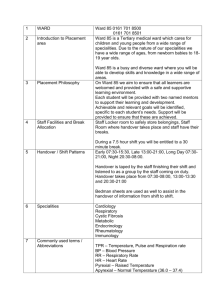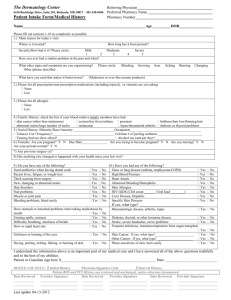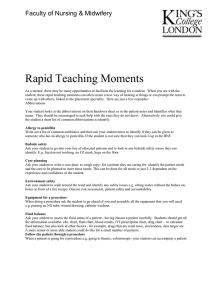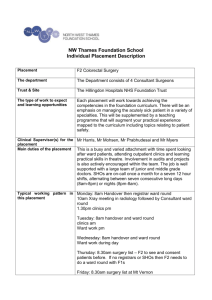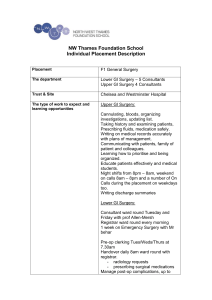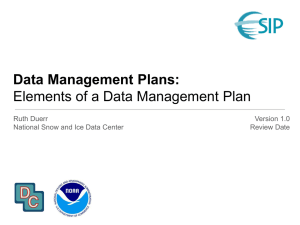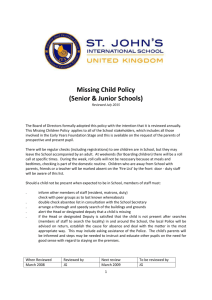Standard-ICU-day
advertisement
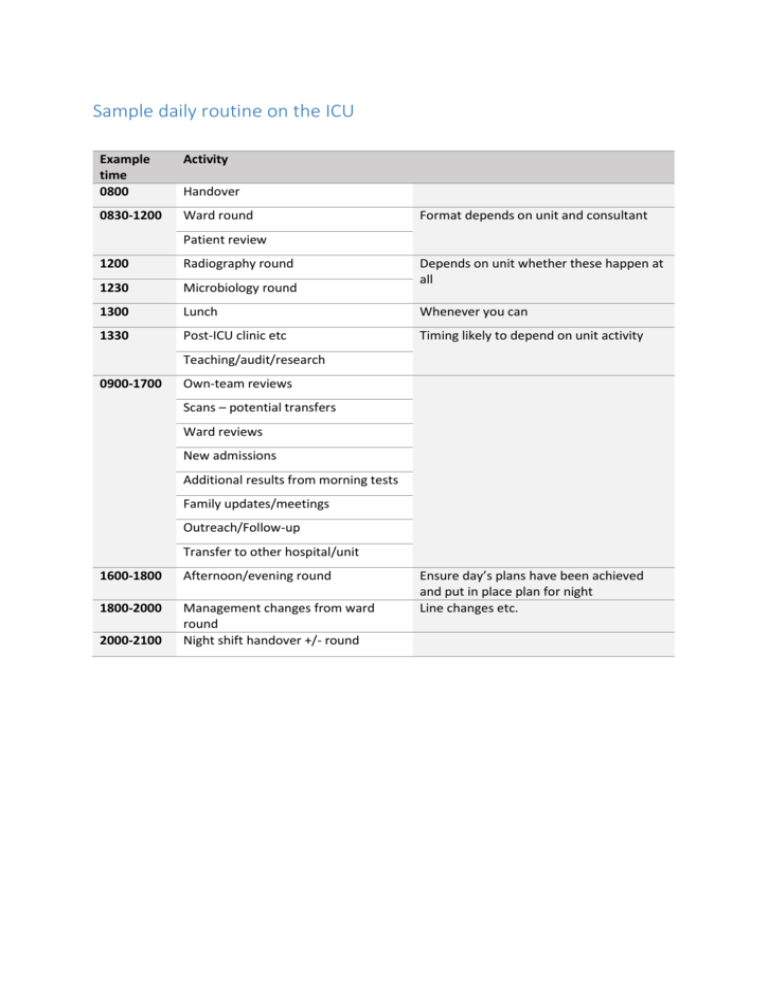
Sample daily routine on the ICU Example time 0800 Activity 0830-1200 Ward round Handover Format depends on unit and consultant Patient review 1200 Radiography round Depends on unit whether these happen at all 1230 Microbiology round 1300 Lunch Whenever you can 1330 Post-ICU clinic etc Timing likely to depend on unit activity Teaching/audit/research 0900-1700 Own-team reviews Scans – potential transfers Ward reviews New admissions Additional results from morning tests Family updates/meetings Outreach/Follow-up Transfer to other hospital/unit 1600-1800 Afternoon/evening round 1800-2000 Management changes from ward round Night shift handover +/- round 2000-2100 Ensure day’s plans have been achieved and put in place plan for night Line changes etc. Reviewing the ICU patient Know the history and progress first. Acknowledge any limitations on movement (eg spinal injury restrictions, known or suspected high ICP recent history of desaturation on rolling etc.) and removing dressings. Stand back and observe Mental state, GCS, sedation score Monitors Equipment attached Infusions Drains Speak to the patient Symptoms, trends, pain score etc. Gain consent to examine. Use your unit’s proforma review sheet or follow this: Airway Mouth – perioral skin, lips, tongue, Candida?, dental hygiene, bleeding, cyanosis Tubes/devices – ETT length at teeth, other airway device, oesophageal Doppler, OG tube, Nose – airway device, NG tube (secure?), discharge, bleeding. Standard respiratory exam (probably can’t sit them forward, worth auscultating after suction/cough, as anteriorly and posteriorly as possible (often only axillae) Look at tidal/minute volume. Note settings (FiO2, mode and pressures) and doses of bronchodilator nebulizers or infusions. CVS Peripheries – colour, perfusion, pulses, skin changes, anaemia Standard examination CVS parameters and infusion rates of pressors, dilators, chrono/inotropes. Abdomen Wounds. Feeding regimen. Palpate, ascultate. Stoma output. Drain output. Rectal tube output / stool type. Drain/catheter sites, integrity, output. Neurology and mental state Eyes – erythema, oedema, pupil size and function, Agitation score and delirium assessment. Ask about hallucinations, anxiety. Focal neurology if appropriate Fluid balance and kidneys Last 24hr and whole stay Diuretics used? Renal function results. Urine sample required? Skin and lines Lines in date and site ok Skin survey Then continue with the notes/chart/computer Haematology Hb, platelet and coagulation values. Consider blood products if lines/procedures planned Microbiology New results – inflammatory markers and specimens. Known colonizers. New cultures required? Drugs, day and reason for doses and levels. Drug chart review Anything to stop. Interaction/allergy check. Treatment limitations Therapeutic ‘ceilings’ or DNAR orders etc.? Jehovah’s witness re blood products Advance directives Next of kin or advocate Updated and in agreement with the plans. Document all the above Start with the current main issues, and indicate whether they are improving or deteriorating.Then: Your review findings In the order as above Your impression A summary line, likely to conclude with 'deteriorating', 'improving', 'weaning' etc! Your plan Address the current issues in turn Sample ward Round Structure Decision re who gets seen first – potential discharges ‘v’ most unwell ‘v’ just sticking to the order. At each patient Admission diagnosis and background (PMH) Clarify if necessary Progress summary The stage of their critical illness The general trend Systems reviewed – as per above structure Results reviewed Imaging reviewed View, compare, view report, discuss with radiologist or specialist, ?repeat, opinions in notes Echo? Drug review For each drug, check: still required, not contraindicated, level checked, dose adjustment, convert route or convert to alternative, interactions. Pre-admission drugs restarted where appropriate. Referral Speciality review (?other hospital). Palliative care Pain team Family and home team update Instructions in notes and for nurses clearly written Then: Final rapid-fire cross-check – eg FAST HUG or adapted version eg ‘FLAST HUG DRIFT’: 1. 2. 3. 4. 5. 6. 7. 8. 9. 10. 11. 12. Fluids/feeding/faeces (ie aperients) Lines - still required, VIP, correctly sited Analgesia/Sedation started/stopped/altered Thromboprophylaxis started/stopped(for procedures/bleeding)/HIT, Head-up/rolling/spinal precautions, Ulcer prophylaxis started/stopped/correct, Glucose control - ?alter scale or change feeding regimen or restart long-acting insulin etc Drugs stopped/adjusted/restarted (inc pre-admission drugs) Referrals made/done and home team updated Imaging needed/reviewed/referred Family updated Team up to date and in agreement (nurses instructions etc)

